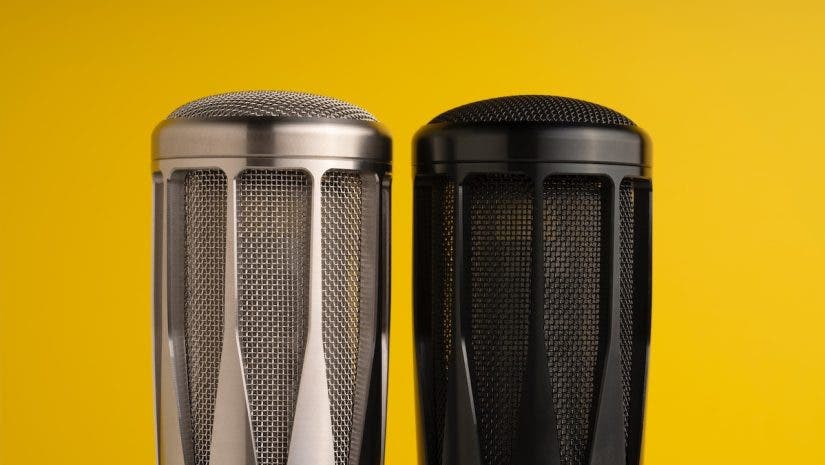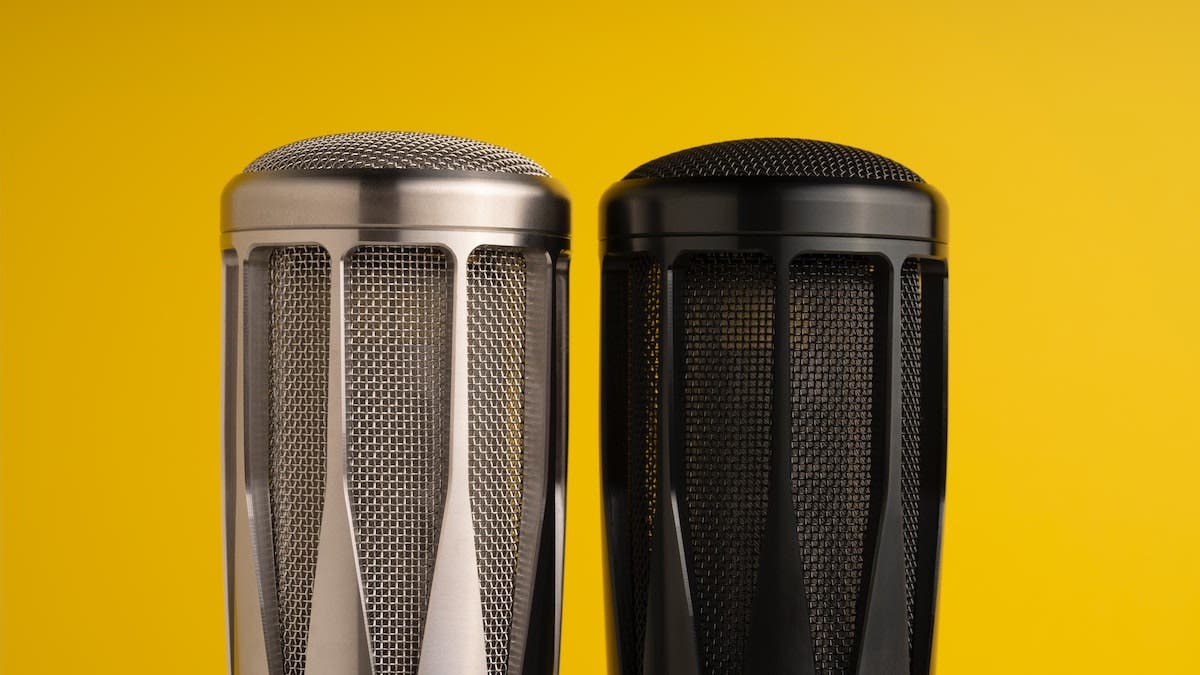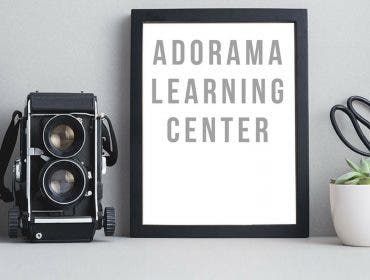Even a seasoned pro recording engineer would be forgiven for blanking on the differences between dynamic and condenser microphones. You may find yourself more familiar with the qualities of microphones models of a given variety, but what about the characteristics of each variety? What overall differences and similarities exist between condenser vs dynamic microphones? We’ll be covering this, and more, in the sections below.
Condenser vs Dynamic: What are the Key Differences?
At their core, all microphones are transducers. This means it’s a device that converts energy from one form (acoustic) into another (electric). The mechanical energy of the sound wave acts on the microphone in a way that creates an electric current. Both microphone types contain diaphragms. These are thin cone-shaped membranes that vibrate when struck by sound waves. Both output low-voltage electrical currents, requiring additional voltage gain from a pre-amplifier for use in recording and signal processing. What happens between the microphone diaphragm and its electrical output are the defining scientific characteristics of these transducers.
Dynamic Microphones
Dynamic microphones utilize electromagnetic induction, which uses a metal coil wrapped around a magnet. As the position of the coil relative to the magnet changes, so changes the magnetic flux within the coil, creating an electromotive force. In order to move this coil, the microphone diaphragm is physically connected to the coil. When sound waves case the diaphragm to vibrate, the diaphragm pushes and pulls the metal coil, creating a very small electrical current. Electromagnetic induction requires no additional power source beyond the mechanical force used to drive the diaphragm, provided by the sound wave. As a result, they do not require the additional 48 volts provided by phantom power to operate. They are powered naturally-occurring sound waves.
Condenser Microphones
Condenser microphones utilize electrical capacitance, which uses two metal plates. Because capacitance of both plates is inversely proportional to the distance between them, any change in difference results in changes in capacitance. By using the microphone diaphragm as one of two such plates, capacitance changes are created when sound waves cause the diaphragm to vibrate back and forth, creating very small changes in distance between both plates. Voltage from a battery or phantom power is required to maintain a constant charge in the capacitor, so that changes in capacitance are reflected as changes in voltage. Supplied with current gain (no further voltage gain is needed), the resultant electrical current is output from the microphone.
When to Use a Condenser Microphone
Condenser microphones, containing more sophisticated electrical circuitry, are generally less durable and more expensive than their dynamic counterparts. Due to their increased sensitivity, they are also preferable when capturing quieter sounds. For versatility, some condenser microphones feature two diaphragms, which allow them to operate in a variety of polar patterns – omnidirectional, sub-cardioid, cardioid, super-cardioid, hyper-cardioid, and bidirectional.
These patterns alter the way in which sound is captured around the microphone body, as well as having an effect on frequency response, giving a single microphone additional uses. They are commonly found in indoor, controlled recording environments like studios and concert halls. These are great for higher-budget applications.
Recommended Condenser Mics
Rode NT1 5th Generation Hybrid Studio Condenser Microphone
This large-diaphragm cardioid microphone is the newest iteration of Robe’s NT1. It has a HF6 1″ true condenser capsule to offer smooth frequency response, great for everything from vocals to musical instruments. It also has a dual connect output for both XLR and USB connectivity.
- Trusted brand and classic product
- Rugged aluminum body
- Very low self-noise
- High-resolution (192kHz) A/D conversion
- On-board DSP
Audio-Technica AT2020 Cardioid Condenser Microphone
Operating in a single polar pattern, this dynamic condenser microphone is less sensitive and exhibits higher self-noise than most. It features a frequency response that is largely neutral, with some slight attenuation of lower frequencies. What it lacks in quality, it makes up for in low price. This is a great option as an entry point into recording.
- Low price point
- Rugged construction
- Low sensitivity compared to other condensers
- High self-noise
- Largely flat above 120Hz
Turnstile Audio Concourse Series TAC700 Multi-Pattern Condenser Microphone
A newcomer to the field, the TAC700 features a similar can design and rugged construction. The addition of a small selection of polarity switches allows the microphone to operate as omnidirectional, cardioid, or bi-directional. It also features an input pad and low-cut filter, though with an SPL handling of 149dB. This means it can handle super loud sounds. I can’t imagine a scenario in which that pad would need to be engaged short of a NASA launch.
- Low price point
- Multiple polar patterns
- High SPL handling
- Low sensitivity compared to other condensers
- High self-noise
H&A Surfur Professional Cardioid Condenser Microphone
This entry-level microphone operates with a scooped frequency response that operates best in midrange frequencies. Sharing similar sensitivity and signal to noise ratio, this is truly a bargain microphone that is meant to excel as a first microphone — particularly for podcasting or vlogging. If your recording space suffers from low-frequency HVAC or traffic noise, the diminished low-frequency response may actually be to your favor.
- Lowest in-category price point
- Professional look and build
- Scooped frequency response
- Low sensitivity
- Single polarity pattern
Neumann TLM 102 Condenser Cardioid Microphone, Nickel
The kid brother to the legendary Neumann TLM 103, this microphone retains many of the characteristics without quite the same level of notoriety as the 103. That still puts it in the field of extremely high-quality vocal microphones, having high sensitivity, low self-noise, and very high SPL handling. Aside from its sound quality, this microphone is no-frills. It operates only in cardioid pickup pattern and lacking any sort of pads or filters – a characteristic in common with the 103.
- Flat, full-range frequency response
- High SPL handling
- Singular polar pattern
- Priced consistently with other professional vocal mics
- Fragile, requires delicate handling
Sennheiser Dual-Diaphragm Condenser Microphone
As a useful, sturdy, large-diaphragm cardioid microphone that excels in-category, you’ll encounter this one in a variety of applications. Operating in a variety of polar patterns (omnidirectional, bi-directional, cardioid, sub-cardioid, and hyper-cardioid) with a flat frequency response, this mic also comes with 60Hz and 100Hz filters, as well as -10dB and -20dB pad options. All those characteristics make it handy in a variety of applications. It’s not uncommon for recording studios to carry multiple as a result.
- Multiple polar patterns
- Flat frequency response
- Multiple pad and filter options
- Very low self-noise
- Priced consistently with other professional instrument mics
When to Use a Dynamic Microphone
Dynamic microphones, containing less sophisticated electrical circuitry, are regarded as extremely rugged and will continue to operate dependably in some of the most extreme circumstances. Simpler construction and less electronic components also allow them to be generally more affordable than their condenser counterparts. Because their frequency responses are generally not flat, they can be tailored to specific applications. This includes kick drum microphones, or paired to a specific instrument or vocal timbre to take advantage of their specific sonic characteristics. These are standard for live music, tours, and some high-SPL applications like close-mic’ed drums and brass instruments, especially when a less bright sound is desirable.
Recommended Dynamic Microphone
Sennheiser MD441-U Dynamic Supercardioid Microphone
This microphone is the big brother to the classic Sennheiser MD421, though less alike than one would think, having a warmer sound and operating as a super-cardioid (rather than the cardioid polar pattern of the 421). For versatility, it features a five position bass roll-off switch, as well as a treble-boost switch, earning it a place in many a mic collection. An integrated pop filter means it’s ready to go for vocals, and high SPL handling lends it to a variety of instrument applications, most notably drums and guitar cabinets.
- Variety of frequency settings
- Integrated pop filter
- High SPL handling
- High price point among similar instrument microphones
- Single super-cardioid polar pattern
Shure SM58S Cardioid Dynamic Handheld Wired Microphone
A very specific but extremely useful microphone, the SM58S is Shure’s legendary SM58 microphone with an added on/off switch. The SM58 is most commonly suited for live vocal music applications, with a frequency response that is contoured to vocals, built-in pop filter, notable durability and feedback rejection. The addition of the on/off switch is meant for public address applications, such as a talkback or whenever you may want the subject to have self-muting power. I commonly pair them with stage managers and musical directors in live theater applications, to give them autonomy over their own communications.
- Excellent durability and feedback rejection
- Frequency response contoured specifically for vocals
- Low in-class price point among live vocal microphones
- Switched option is critical for specific applications
- Low handling noise
Rode PodMic Dynamic Podcasting Microphone
As the name suggests, the PodMic is Rode’s consumer offering for podcasting, vlogging, and live streaming. This is meant to provide a broadcast-quality sound with affordability for home users. The internal pop-filter is a must-have in this category, and the rest is all sound quality, with a frequency response that is specifically tailored to close-mic’ed speech. There are no filters or pads — just a very straightforward podcasting microphone.
- Rugged construction, professional look
- Specifically manufactured for broadcast vocal sound
- Internal pop filter
- Competitively priced for consumers
- No lifters, pads, or other features
Audio-Technica AT2005USB Cardioid Dynamic USB/XLR Microphone
In the AT2005USB, Audio Technica made a consumer microphone that does a bit of everything. Having a form factor of a handheld microphone, it can be used for live public address or vocals. The onboard USB connection also suggests podcasting and voiceover applications, for which one usually wouldn’t want a handheld microphone (USB connections being less sturdy than XLR), but if you find yourself in need of two different microphones with a low budget, this might be a solution. I could particularly see it having a place in schools.
- Onboard USB connection to record directly to a computer
- Onboard headphone jack for personal monitoring
- On/off switch, similar to the SM58S
- XLR output for live vocal applications
H&A AC50 Cardioid Dynamic Studio Broadcast Microphone
Similar to the Rode Podcaster, the AC50 also aims to emulate the close-mic broadcast sound of the RE20 for consumers creating their content from home. A single low cut filter is appreciated, given that users will be in very close proximity to the microphone, and the same goes for the internal pop filter. It is similarly contoured to the voice to achieve a broadcast-style sound. The build quality is less rugged on this aluminum-body microphone, with half the weight of the similar H&A AC60 hypercardioid dynamic microphone.
- Budget vocal broadcast microphone
- Optional low cut filter
- Internal pop filter
- Vontoured frequency response
- Light build quality
Frequently Asked Questions
What are some other types of microphones?
Other popular microphone types include electret, ribbon, valve, and piezoelectric microphones. Electrets are most popular in subminiature lavalier microphones, used in television, film, and theatre. Ribbon microphones replace a conventional diaphragm with a metal ribbon, and are known for their colorful sound quality, extreme fragility, and high cost. They are found almost exclusively in high-end recording studios. Valve microphones are condenser types that utilize vacuum tubes to output sound, and are known for their warmth. Musicality, and vintage aesthetic, as well as their delicacy, making older models extremely rare and sought after – though modern equivalencies exist as well, and are widely available.
What kind of microphone do streamers use?
Most streamers have gravitated toward dynamic microphones that are manufactured specifically for voices. High sound quality combined with a low price point due to their single-natured use have pushed this trend. Microphones like the Electro Voice RE-20 and Shure SM7B, both dynamic, are arguably the most popular for this application.
Which is better for live vocals?
Live vocals generally look toward dynamic microphones for their contouring, cardioid pickup pattern, low cost and high durability. The Shure SM58 is the most popular example of this. Although handheld condensers like the Neumann KMS 105 sound more balanced, their increased fragility and higher purchase price make these more of a specialty item.
Conclusion
Having an understanding of how the two most popular microphone types work is useful for anticipating how they may respond in different circumstances, but nothing beats the real-world experience of listening and using a microphone for yourself. That said, it’s easy to get caught up listening to and experimenting with different microphones, that one loses sight of why fundamental differences between types exist in the first place. Combining this sort of foundational understanding with critical listening skills will help you identify how to select the best microphone for the job every time.






